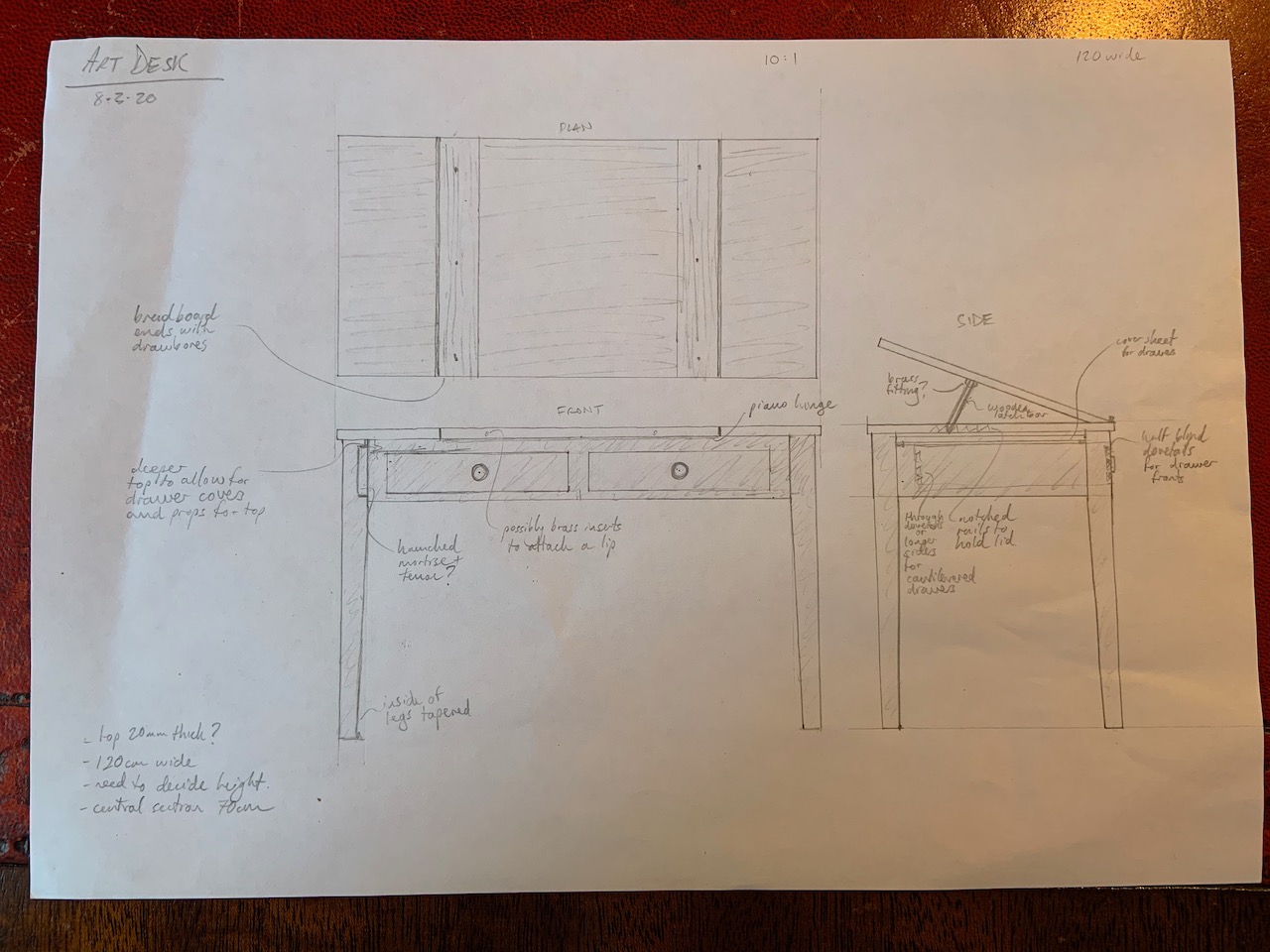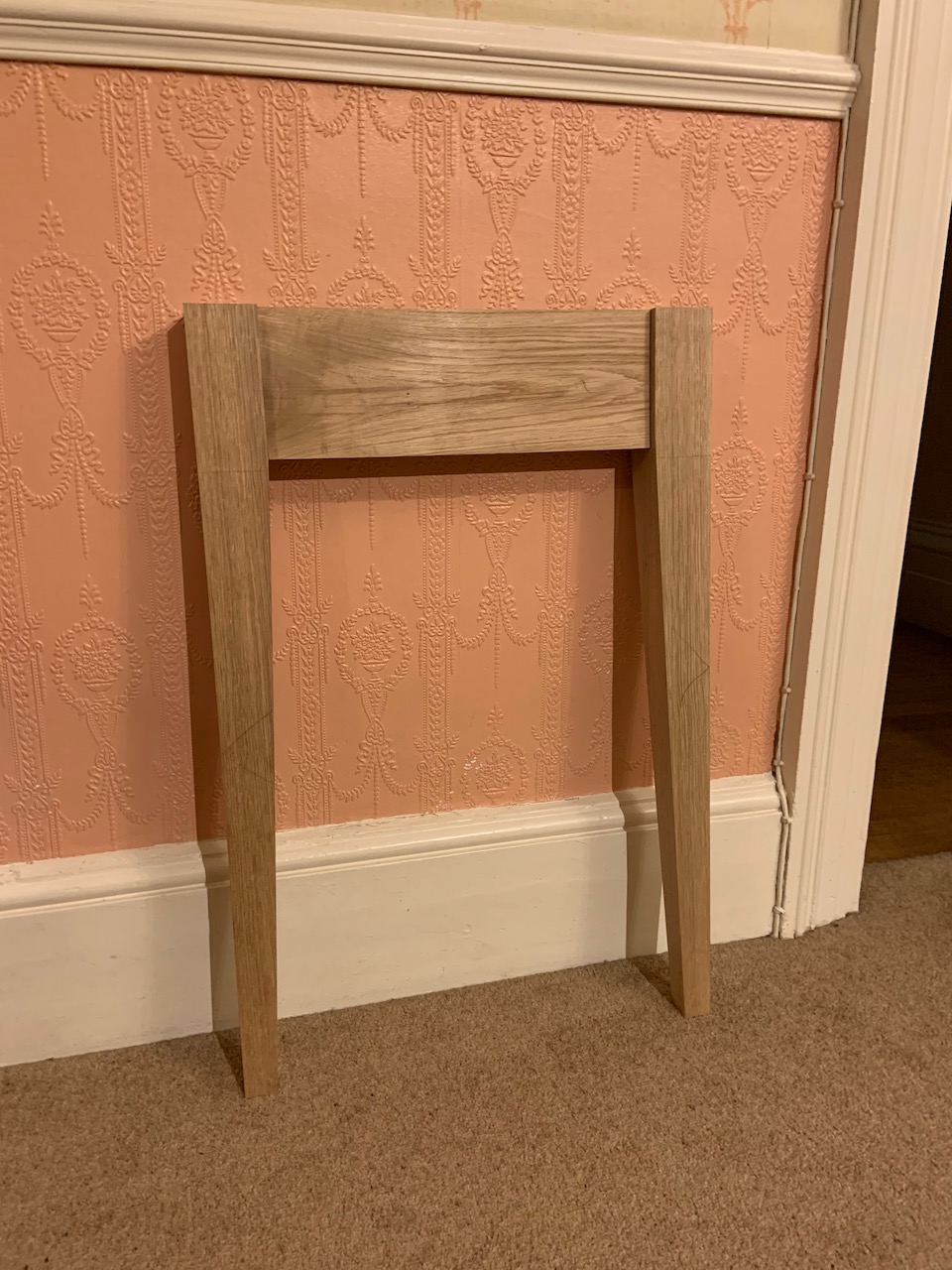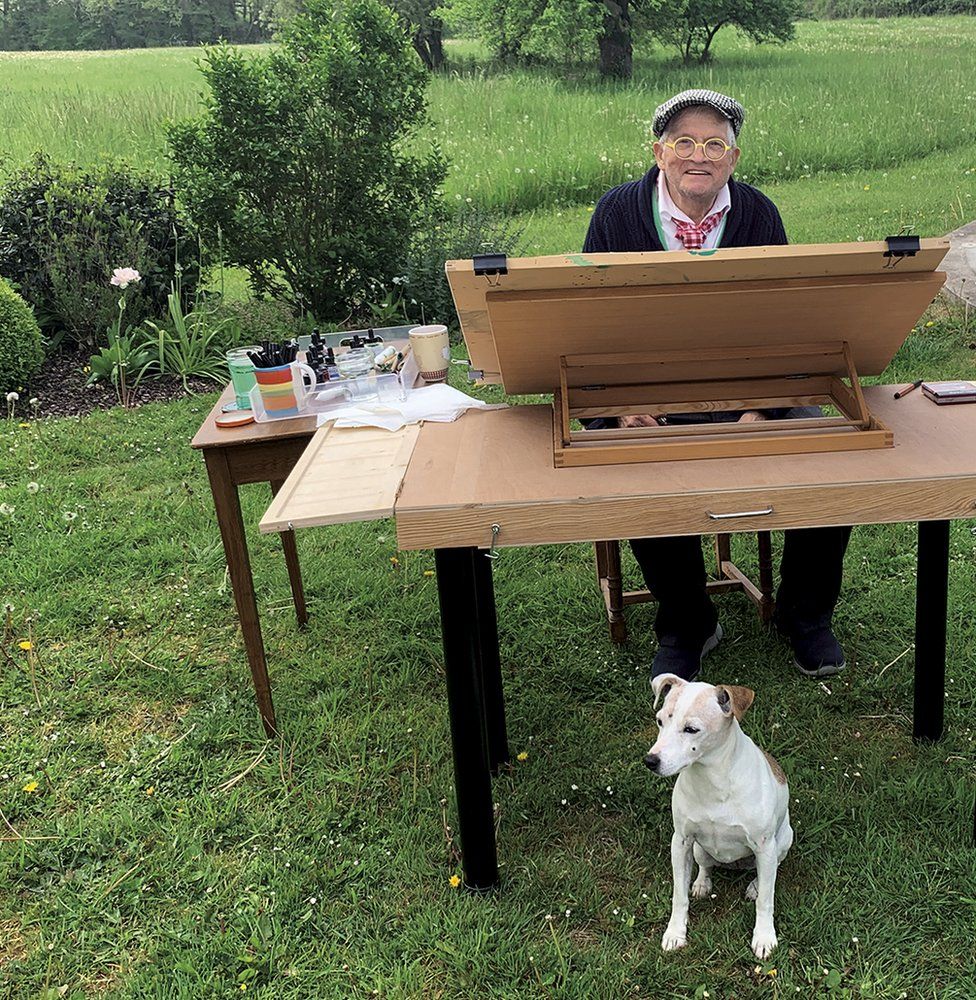I'm thinking about moving on from workbench, stool, assorted dovetail boxes to something a bit more ambitious - an art desk/painting table for my daughter.
She's 12 and quite into her painting at the moment and I think she's rather good. I had intended to make some kind of box for her to store her paints etc. in, but on a recent trip to Hobbycraft, she took a bit of a shine to an art desk. It was a bit like an architect's desk with a top which could be lifted up to slope. The problem was that the thing was pretty ghastly so I wondered if I could make something with similar functionality but out of solid wood (oak in this case because that's what I have).
Here is my first drawing:

My first question relates to the top. The plan is that the central part will lift up with the two sides remaining flat for water, paints, palette etc. to sit on. As it will be effectively unsupported (only attached to the undercarriage at the front edge with some sort of hinge), I think breadboard ends are a sensible way to go. My question is whether the side pieces will be OK as they are or whether there is a risk of them cupping?
I have other questions, but I'll break this up into separate posts.
Thanks
She's 12 and quite into her painting at the moment and I think she's rather good. I had intended to make some kind of box for her to store her paints etc. in, but on a recent trip to Hobbycraft, she took a bit of a shine to an art desk. It was a bit like an architect's desk with a top which could be lifted up to slope. The problem was that the thing was pretty ghastly so I wondered if I could make something with similar functionality but out of solid wood (oak in this case because that's what I have).
Here is my first drawing:

My first question relates to the top. The plan is that the central part will lift up with the two sides remaining flat for water, paints, palette etc. to sit on. As it will be effectively unsupported (only attached to the undercarriage at the front edge with some sort of hinge), I think breadboard ends are a sensible way to go. My question is whether the side pieces will be OK as they are or whether there is a risk of them cupping?
I have other questions, but I'll break this up into separate posts.
Thanks




















































